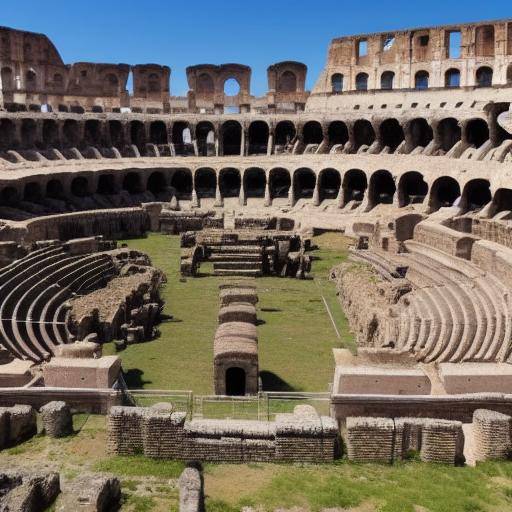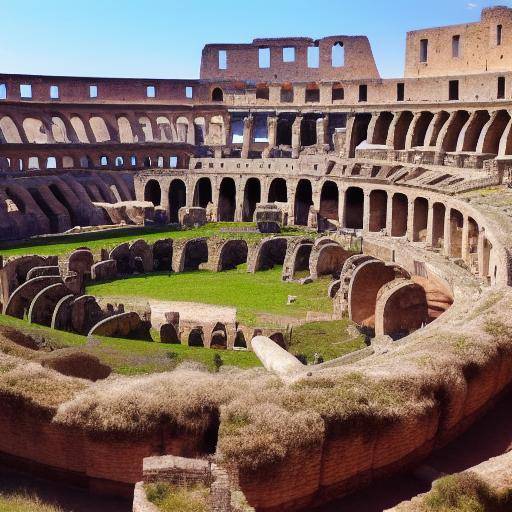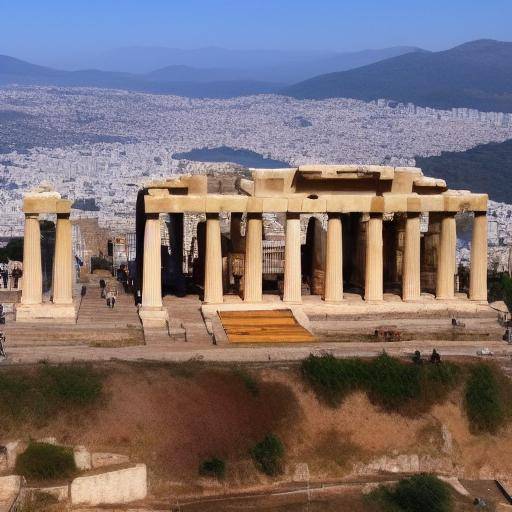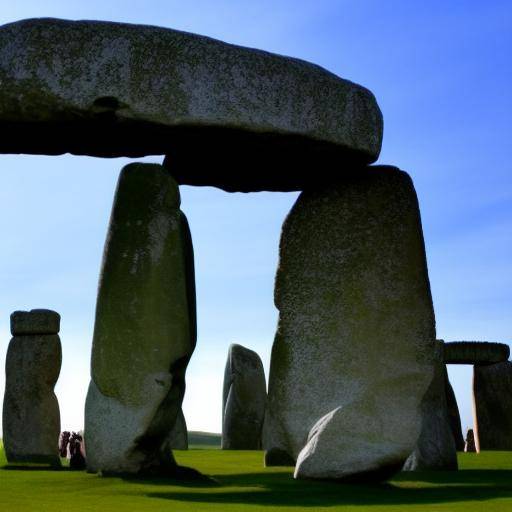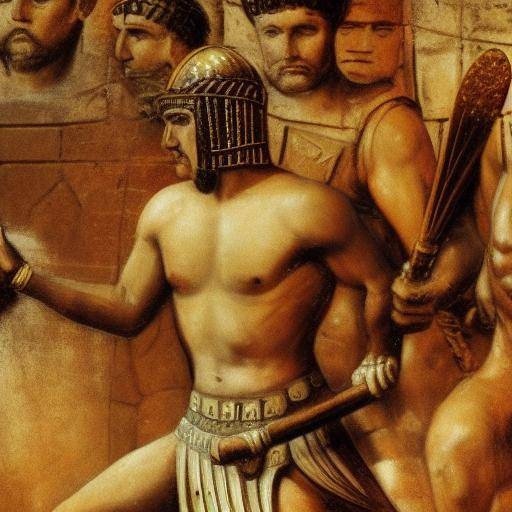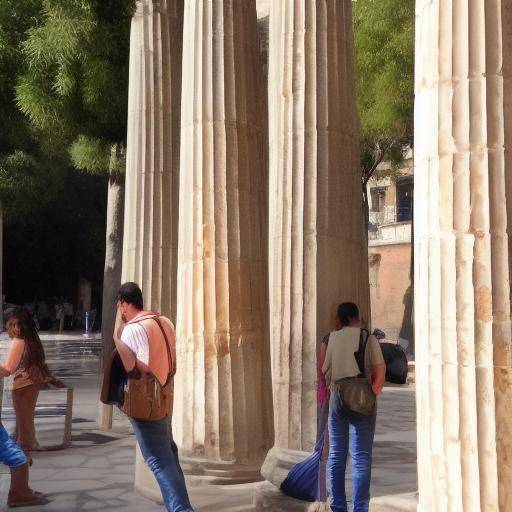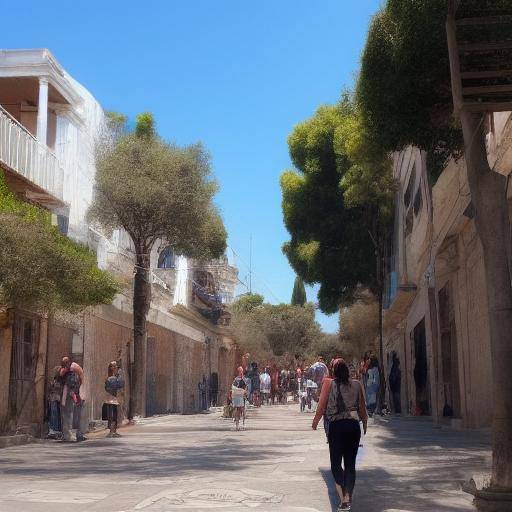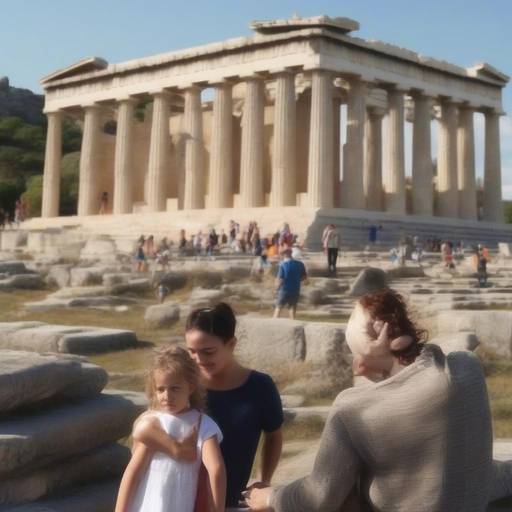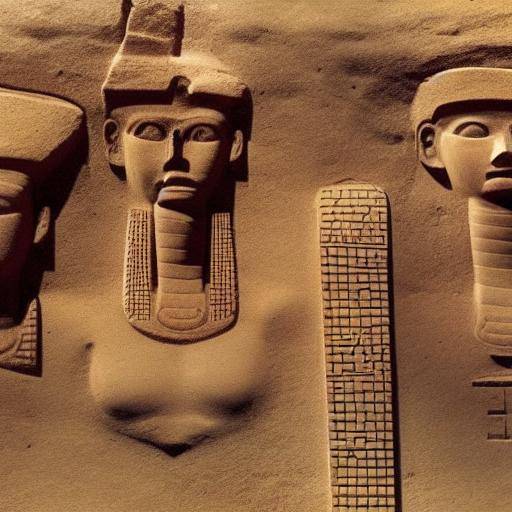
The Acropolis of Athens is an emblematic place that breathes ancient history in each of its corners. This archaeological site, located on the top of a rocky hill, is a symbol of the grandeur of ancient Greek civilization. In this article, we will explore both the Acropolis and the city of Athens, exploring its history, meaning and importance in ancient Greece. In addition, we will discover the wonders of ancient history that hide in every stone of this fascinating place.
Exploring the Acropolis of Athens
The Acropolis is an archaeological treasure that has preserved the grandeur of ancient Athens over the centuries. From its imposing temples to its magnificent monuments, each structure tells a fascinating story that transports us to the heart of classical civilization. As you travel through its ancient ruins, you can feel the magnificence of an era that has left an imprint in the history of humanity.
History and Background
Origins of the Acropolis
The Acropolis of Athens has its roots in the micenic era, with evidence of settlements dating from the 16th century BC. However, its splendor was experienced during the Golden Age of Athens in the 5th century BC, when the city reached its maximum cultural and political splendour under the leadership of Pericles.
Evolution and Meaning
During this period, the Acropolis gained monumental importance, becoming the epicenter of Greek civilization and the home of emblematic monuments such as the Parthenon, the Erecteion and the Temple of Athena Niké. These structures were not only testimonies of the architectural skill of the time, but also homages to the Olympus gods and symbols of Athenian democracy.
Travel through time
Over the centuries, the Acropolis has endured invasions, looting, military occupations and natural disasters. However, its resilient spirit has managed to preserve its splendor, making it a living testimony of ancient history that continues to amaze visitors from all over the world.
Analysis in Deep
Challenges and Reinventions
The conservation and restoration of the Acropolis has been a constant challenge for the Greek authorities, who have faced difficulties arising from pollution, surrounding urbanization and the passage of time. Despite this, monumental efforts have been made to restore its monuments and preserve its essence for future generations.
Discovering the City of Athens
Athena: Cuna de la Democracia
Millennial History
Athens, the capital of Greece, is much more than a modern city. Known as the cradle of democracy, Atenea played a fundamental role in the political, cultural and philosophical development of ancient Greece. From its bustling streets to its ancient ruins, every corner of this city conveys the grandeur of its historical legacy.
Ancient Splendor
Testimony of a Golden Age
As you walk through its busy streets, it is impossible not to feel the presence of iconic figures such as Socrates, Plato and Aristotle, whose teachings have resonated over the centuries. Athens is an outdoor museum that treasures treasures such as the Ancient Agora, the Olympic Zeus Temple and the Dionysian Theatre, showing the magnificence and splendor of its ancient history.
The Old History Imperece
Impact and Legacy
The ancient history of Greece represents the cradle of Western civilization, leaving a lasting legacy in art, philosophy, politics and culture. His advances in architecture, literature, mathematics and science laid the foundation for the future development of humanity, and his influence endures today.
Acropolis, Athens, and Ancient History: A Paradigm of Greatness
Similarities and Synergies
Both the Acropolis and Athens share an intrinsic link with the ancient history of Greece. Its interconnection is evident in the preservation of iconic monuments that illustrate the greatness of ancient Hellenic civilization. The Acropolis is the epitome of architectural and spiritual greatness, while Athens serves as a living witness to the splendid history and culture of ancient Greece.
Differences and Singularities
Despite their similarities, the Acropolis and Athens maintain different identities. While the Acropolis represents the culmination of architectural and religious excellence, Athens stands out as the political, cultural and intellectual epicentre of ancient Greece. These differences combine to create a rich and diverse historical landscape that continues to fascinate humanity.
Practical Tips and Recommendations
It is crucial to plan ahead when visiting the Acropolis and Athens, as it will make the most of the experience. Some practical tips include:
- Visit times: It is advisable to visit the Acropolis early in the morning or at the end of the afternoon to avoid crowds and enjoy a quieter atmosphere.
- Tourist Guides: Hiring a tour guide can significantly enrich the visit, providing detailed information and exciting stories about the history and architectural details of the Acropolis.
- Comfortable Footwear: Due to the rocky terrain, it is recommended to wear comfortable shoes and carry water to stay hydrated during the visit.
Conclusions and FAQs
Conclusions
The legacy of the Acropolis and Athens transcends time, reminding us of the splendour and grandeur of ancient history. The visit to these emblematic places is a reminder that the footprints of ancient Greece remain today, urging us to preserve and value the magnificent legacy they have left.
Frequently asked questions
1. What is the best time to visit the Acropolis?
Spring and autumn are usually the best seasons to visit the Acropolis, as the weather is more temperate and the crowds are less numerous.
2. What measures have been taken to preserve the Acropolis?
Measures such as the meticulous restoration of monuments, the limitation of traffic in the vicinity and the installation of information panels to raise awareness of their historical importance have been implemented.
3. How long do you need to go through the Acropolis?
It is recommended to book at least two hours to explore the Acropolis calmly and enjoy its magnificence without haste.
4. What is the influence of the Acropolis in the current architecture?
The Acropolis has inspired countless contemporary architectural works, influencing designs and styles around the world.
5. What is the philosophical legacy of Athens?
Athens was the birthplace of philosophers such as Socrates, Plato and Aristotle, whose teachings have exerted a profound influence on Western thought.
6. How can I maximize my experience in Athens?
Exploring the city of Athens on foot, visiting its museums and tasting the delicious local gastronomy are some ways to fully immerse yourself in its history and culture.
External Sources
For further information on the Acropolis, Athens and the ancient history of Greece, see the following recommended sources:
Traveling the Acropolis and exploring the city of Athens is a journey that transcends time, plunging us into the greatness of ancient history and reminding us of the lasting influence of Greek civilization in the modern world. This unique experience connects us with our origins, inspiring us to appreciate and preserve the magnificent legacy that ancient Greece has left for future generations.

